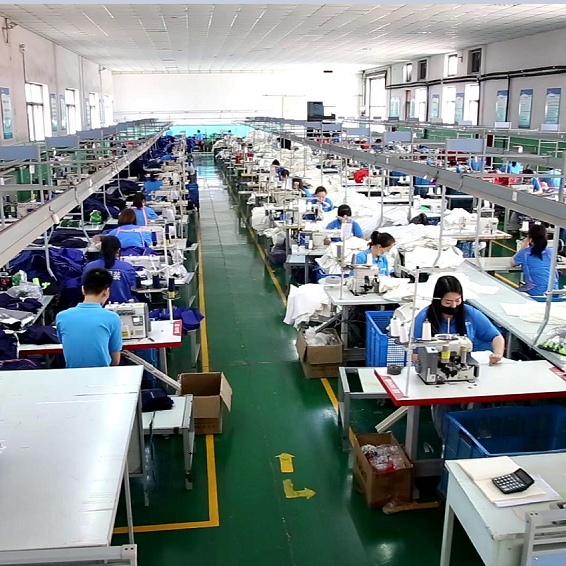Author:HAIYUAN TIME:2025-06-26Read:
That's an astute observation! The prevalence of "Made in China" labels in your closet (and most others globally) is the result of decades of complex economic, political, and industrial factors converging. Here's a breakdown of the key reasons:
The Rise of the "World's Factory":
Historical Shift: Starting in the late 1970s/early 1980s, China embarked on massive economic reforms, opening up to foreign investment and trade. It actively positioned itself as a low-cost manufacturing hub.
Massive Labor Force: China possessed (and still possesses) an enormous, initially very low-cost workforce willing to work in manufacturing. This provided an unparalleled labor pool for labor-intensive industries like garment production.
Government Investment & Policy: The Chinese government heavily invested in infrastructure (ports, roads, power grids) and created Special Economic Zones (SEZs) with favorable tax policies, relaxed regulations, and streamlined export processes specifically to attract foreign manufacturing.
Unmatched Scale and Supply Chain Integration:
Economies of Scale: China developed massive factories capable of producing garments in quantities unmatched by most other countries. This drives the unit cost down significantly.
The "Cluster" Effect: Entire regions (like Guangdong province) became hyper-specialized in textiles and apparel. You find concentrated clusters for every step: spinning yarn, weaving/knitting fabric, dyeing, printing, sewing, accessories (zippers, buttons), packaging, and logistics. Having everything nearby drastically reduces time and cost.
Supplier Diversity & Flexibility: Need a specific type of button, a complex fabric blend, or a last-minute design change? China's dense network of specialized suppliers makes sourcing and adapting incredibly fast and efficient compared to less developed manufacturing bases.

Cost Competitiveness (Though Evolving):
Labor Costs: While wages in China have risen significantly compared to the 1990s/2000s (and are now higher than places like Vietnam or Bangladesh), they are still generally lower than in developed Western nations. Furthermore, the productivity of Chinese workers and factories often remains higher, offsetting some of the wage increase.
Infrastructure Efficiency: Decades of investment mean Chinese ports, roads, and rail systems are generally highly efficient at moving raw materials in and finished goods out to global markets. Inefficient infrastructure adds significant hidden costs elsewhere.
Vertical Integration: Large Chinese manufacturers often control multiple stages of production (e.g., fabric mill + dye house + sewing factory), eliminating middlemen markups and improving coordination.
Manufacturing Expertise and Capability:
Decades of Experience: China has been the dominant force in global apparel manufacturing for 30+ years. This has built immense institutional knowledge, technical skill, and engineering expertise.
Investment in Technology: While known for low-cost labor, China has also heavily invested in automation and advanced machinery for cutting, sewing, and quality control, boosting efficiency and quality for mid-to-high volume production.
Ability to Handle Complexity: Chinese factories are generally adept at handling complex orders, intricate designs, diverse fabrications, and demanding quality standards required by major global brands.
Trade Policies and Global Integration:
WTO Accession (2001): China's entry into the World Trade Organization was a game-changer. It significantly reduced trade barriers for Chinese exports, flooding global markets with competitively priced goods, including clothing.
Export-Oriented Model: China's economic strategy has been heavily focused on exporting manufactured goods. Government policies and infrastructure have been geared towards supporting this export machine.
Why hasn't production shifted completely away yet?
The "Stickiness" of Supply Chains: Building a new supply chain (like in Vietnam or India) takes massive investment and years of development to reach the scale, efficiency, and integration level China has. Brands are often reluctant to move entirely due to risk and disruption.
Moving Up the Value Chain: China isn't standing still. It's increasingly focusing on higher-value, more complex, or faster fashion items where its efficiency and supply chain advantages still dominate, even as lower-skill, basic garment production migrates to cheaper countries.
Domestic Market: China's own huge domestic consumer market provides a stable base for its manufacturers, making them less vulnerable to fluctuations in export demand alone.
In essence: Your clothes are likely made in China because, for the last few decades, it offered the most compelling combination of low cost, massive scale, unparalleled supply chain integration, efficient infrastructure, skilled labor, and manufacturing expertise needed to produce the vast quantities of affordable clothing demanded by global consumers and retailers. While other countries are growing in importance, China's deeply entrenched ecosystem makes it incredibly hard to replace entirely for many types of apparel.
As a leading manufacturer of workwear and protective equipment in China. Our company can provide customers with different types of Workwear. You can choose styles directly from our website. In addition, if you have customized style design drawings, we can provide OEM service for you.
Back to Top
+8619948039507
